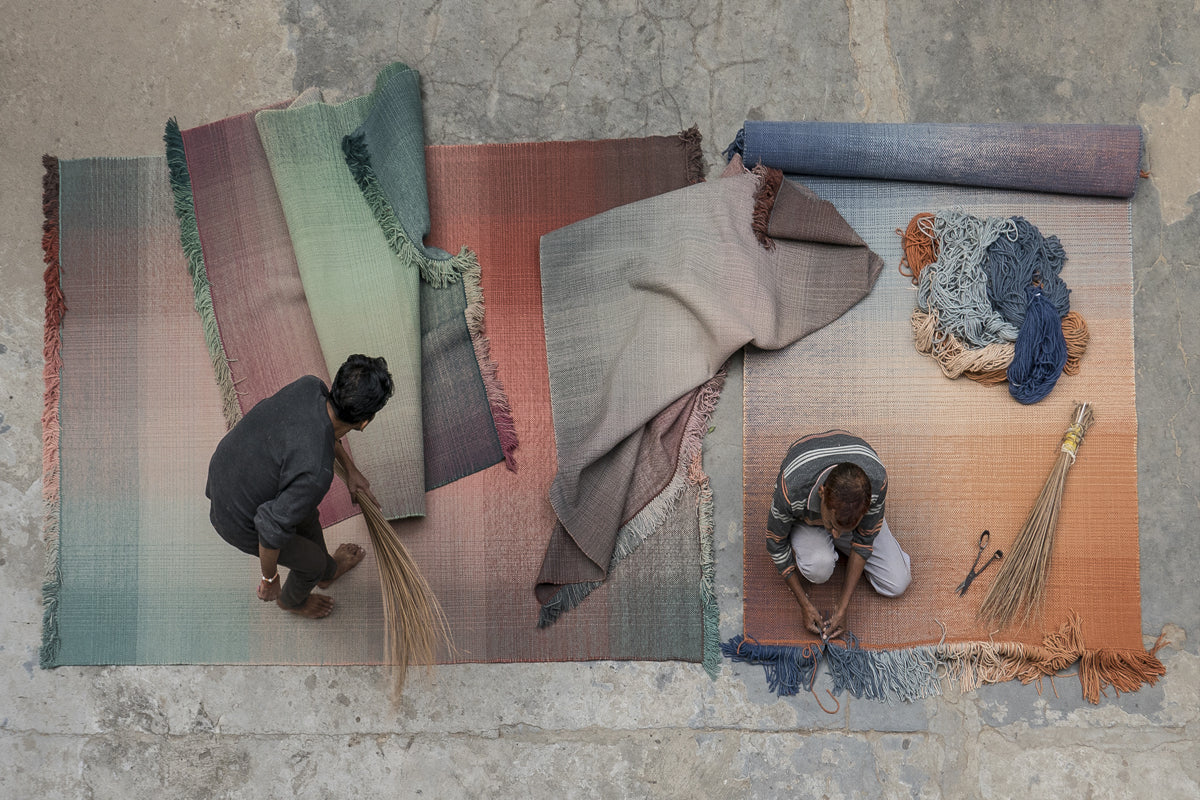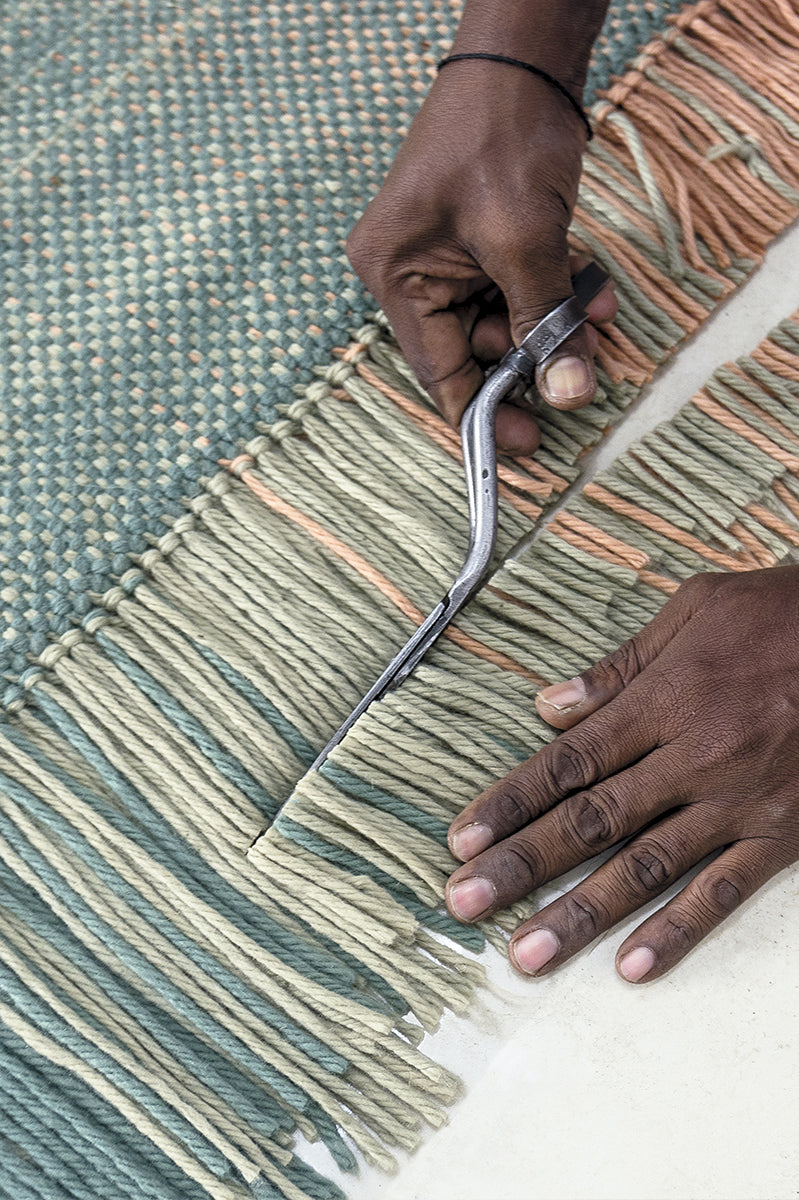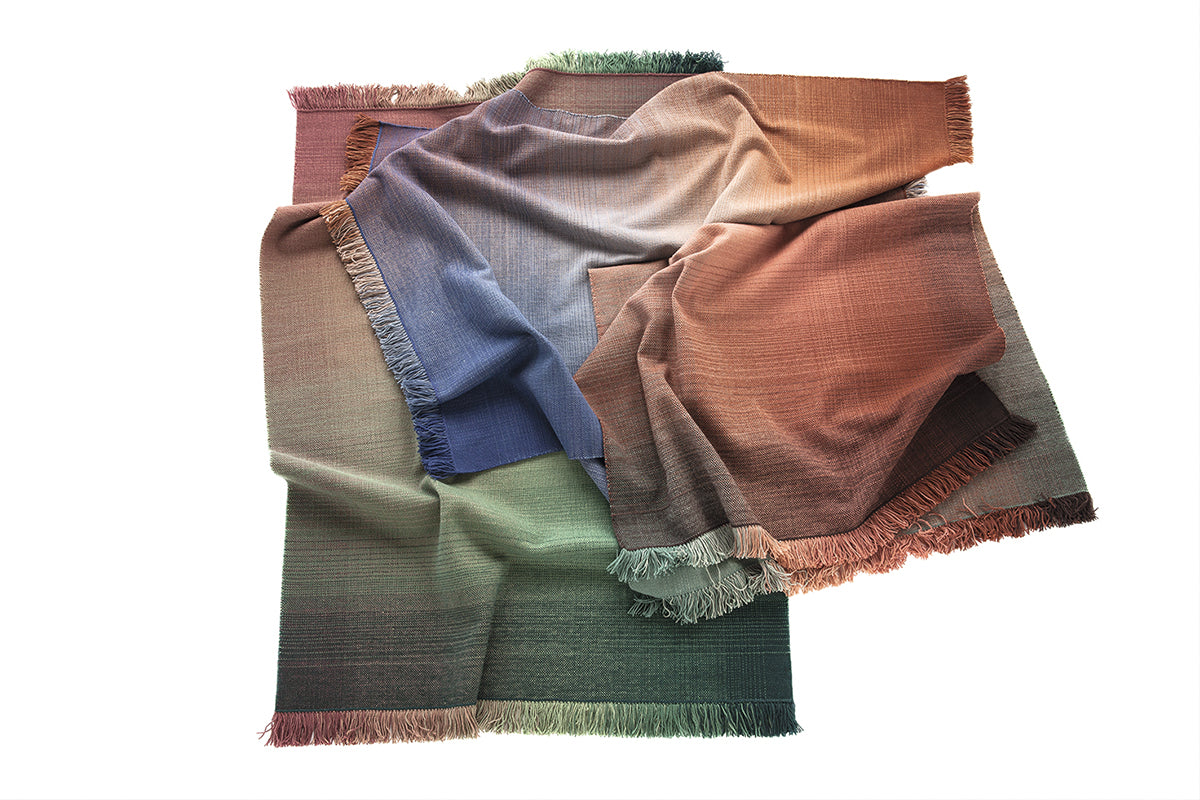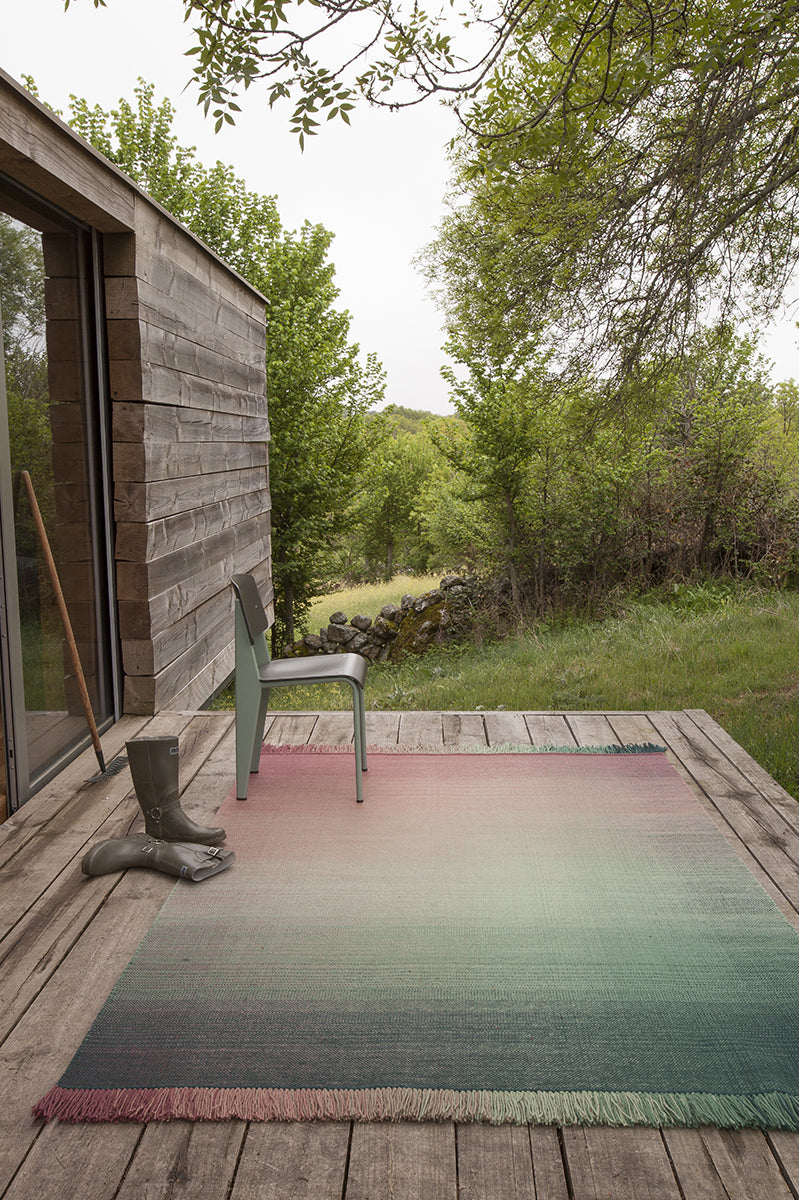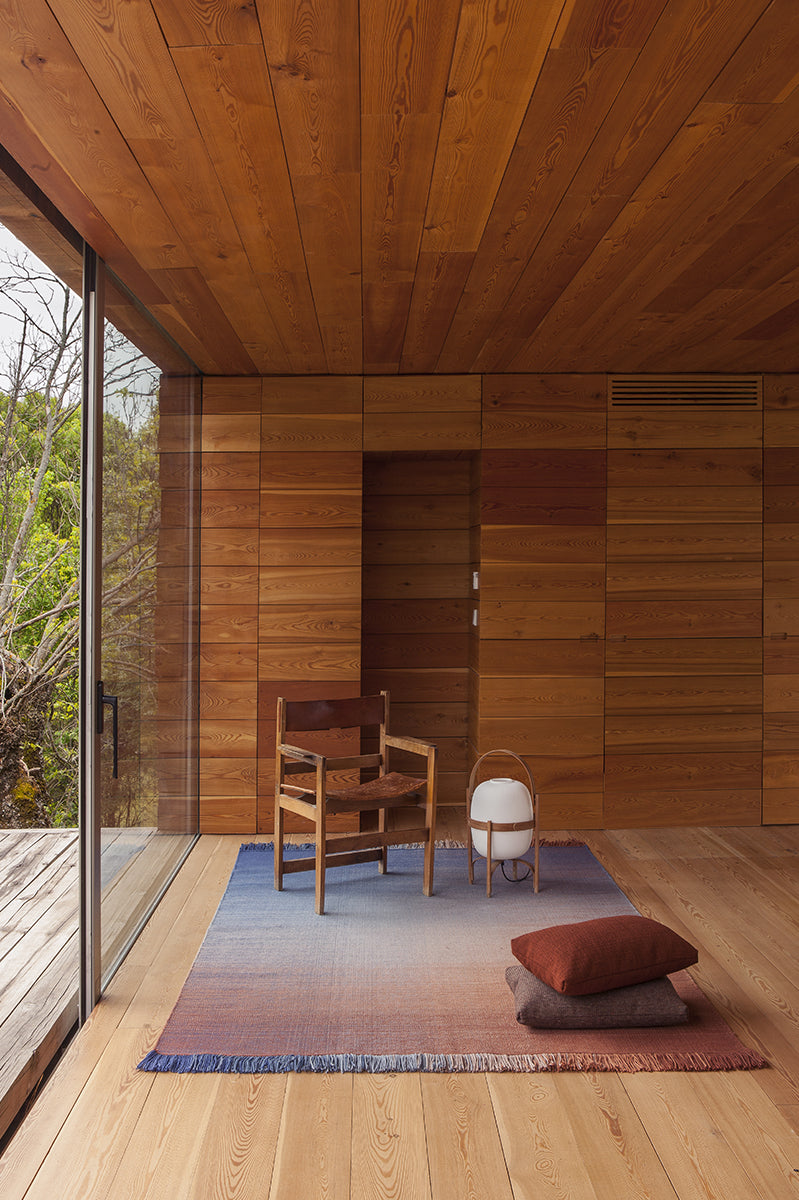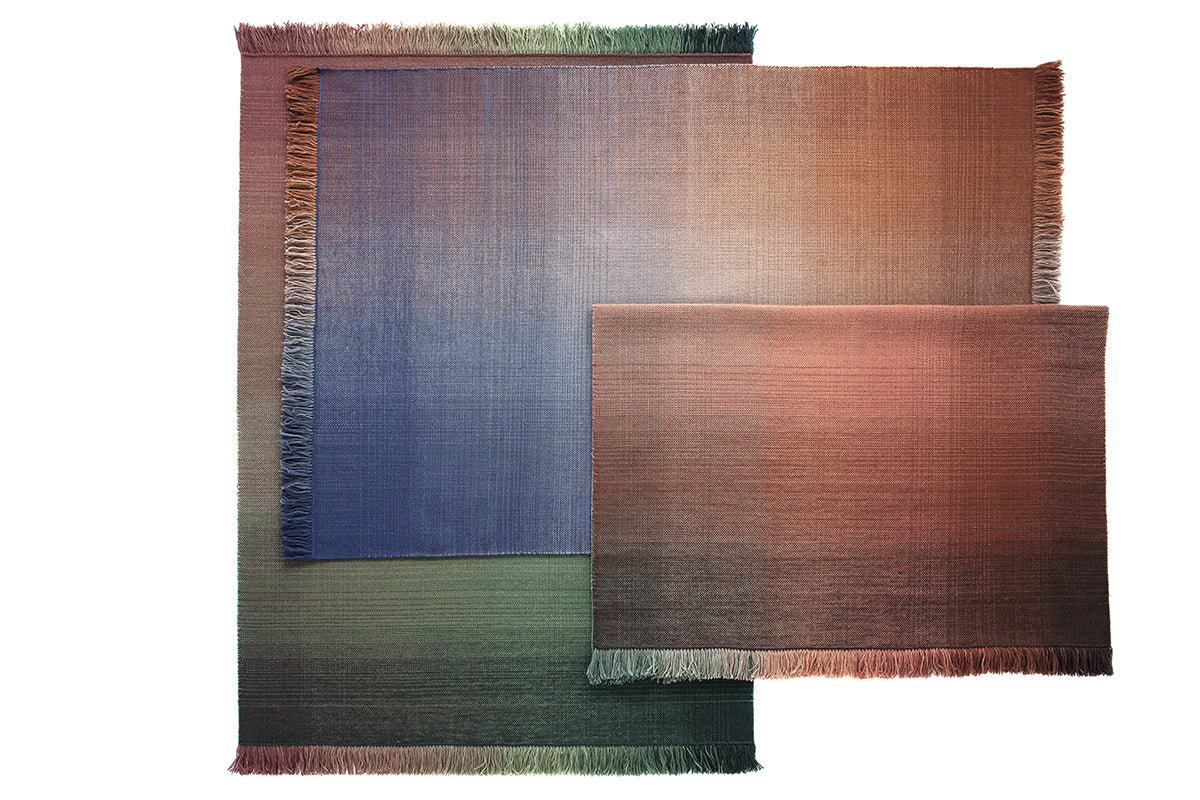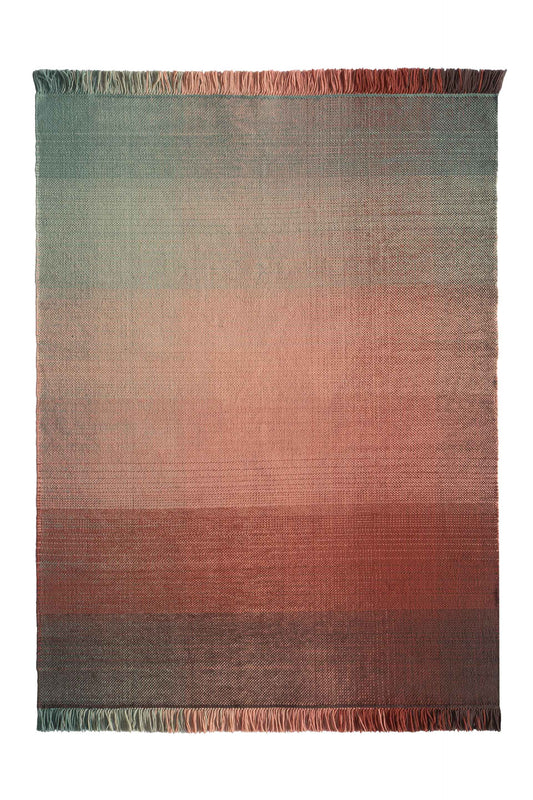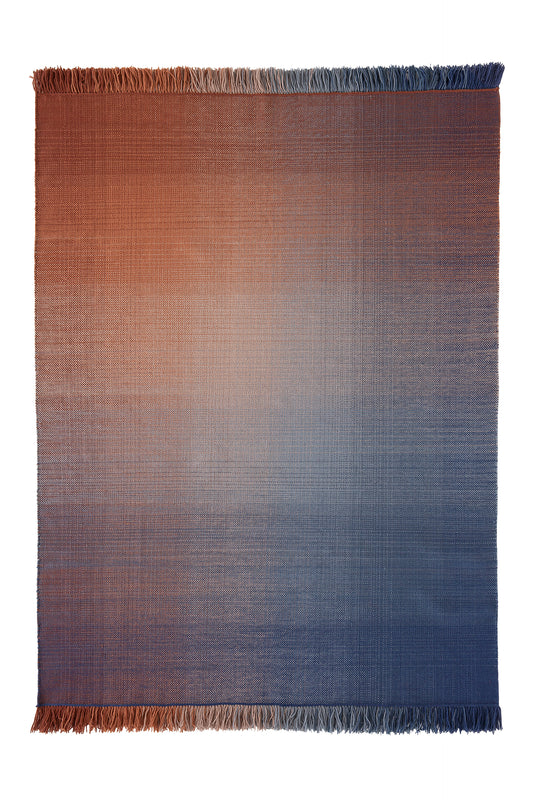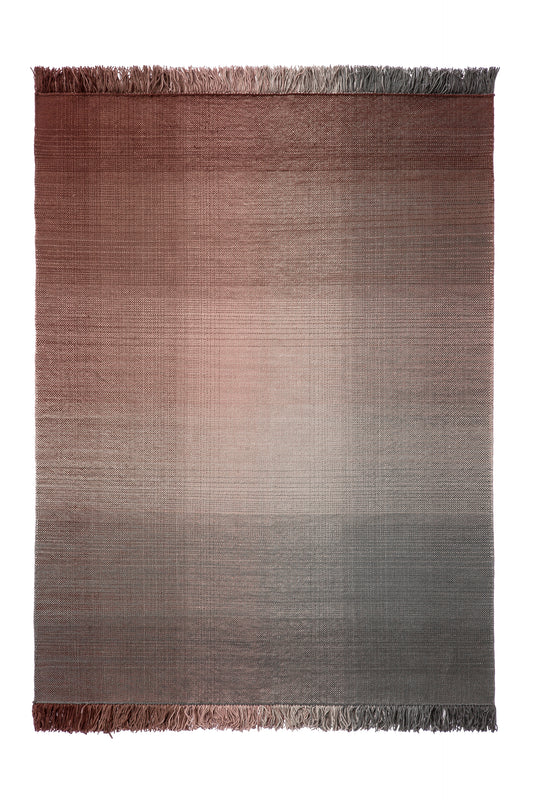The Technical Complexity Behind Shade
Shade is one of the most iconic collections edited by Nani Marquina. Designed by Begüm Cana Özgür, the collection has been a great success thanks to its masterful use of color and weaving techniques.
Turkish designer Begüm Cana Özgür is known for her precise and meticulous approach to color. Although the result appears exquisitely simple, the rug conceals a complex technical process to achieve the density, uniformity, and seamless gradient effect in its design.
It is impossible to define a single color in the Shade rug, which is why we refer to color palettes. Each rug in the collection features a palette of six colors, forming a color gradient. On the loom, this dégradée is arranged both vertically and horizontally, merging on a single plane as the rug is woven. But how is it possible to make the colors transition organically? By combining sequences of solid colors with color transitions and strictly following each stage of the color transition.
The complexity of this design can only be achieved by highly skilled weavers with years of experience and an unwavering respect for traditional techniques and design. Thanks to this expertise, we can enjoy four stunning rugs that transition from turquoise to aubergine, from reddish tones to klein blue, from raspberry to forest green, and from gray to earthy garnet.
This collection deliversa static and visual sense of pleasure, as confirmed by the designer herself:"Shade is a handmade flat woven rug that creates an incrediblys mooth and rounded diffusion of color. Its surface exudes a sense of tranquility and well-being, balanced with the deep vibrancy of its colors."
